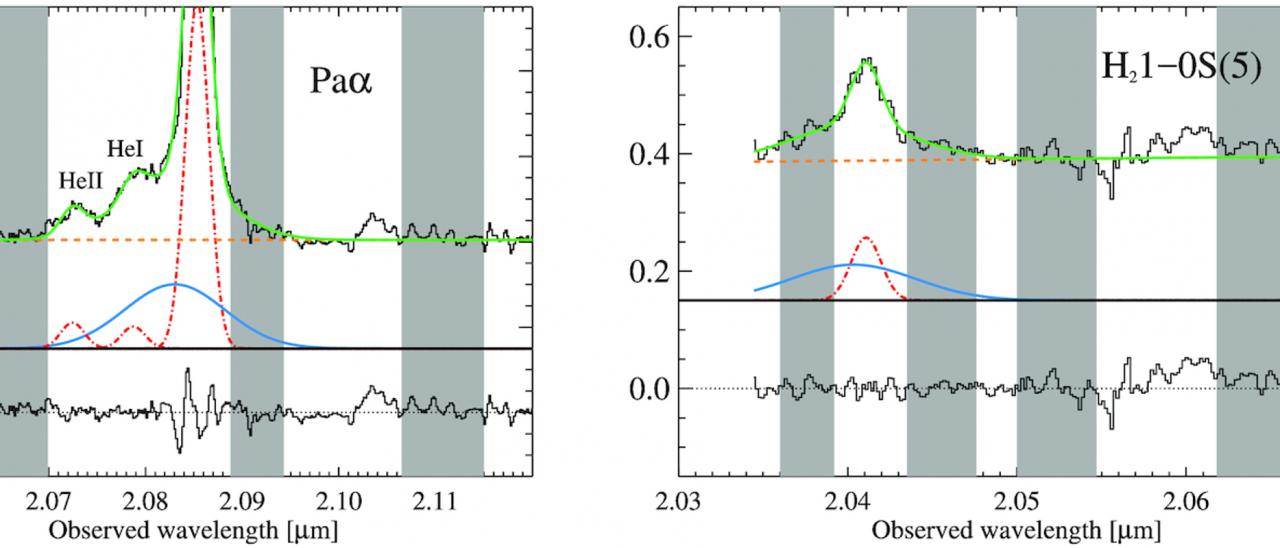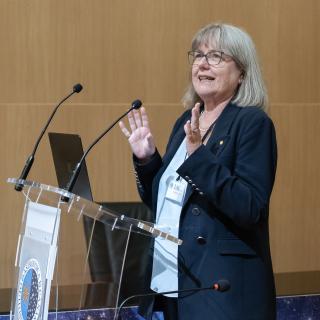The supermassive black holes in the centres of galaxies have a basic influence on their evolution. This happens during a phase in which the black hole is consuming the material of the galaxy in which it resides at a very high rate, growing in mass as it does so. During this phase we say that the galaxy has an active nucleus (AGN, for active galactic nucleus). The effect that this activity has on the host galaxy is known as AGN feedback, and one of its forms are galactic winds: gas from the centre of the galaxy being driven out by the energy released by the active nucleus. These winds can reach velocities of up to thousands of kilometres per second, and in the most energetic AGNs, for example the quasars, can clean out the centres of the galaxies impeding the formation of new stars. To study these winds in quasars we used the EMIR infrared spectrograph on the Gran Telescopio Canarias (GTC). We selected one obscured quasar in the local universe, J1509+0434, which is an analogue of the more distant and far more numerous quasars in which AGN feedback is thought to be dramatically affecting the formation of new stars. EMIR has allowed us to study the winds of ionized and molecular gas from this quasar using the infrared range. This analysis is very important because the winds do not always show the same properties in different gas phases. In the case of J1509+0434 we discovered that the ionized wind is faster than the molecular wind, reaching velocities of up to 1,200 km/s. However it would be the molecular wind which is emptying the gas reservoirs of the galaxy (up to 176 solar masses per year) and thus affecting the formation of new stars. The study of this and other local quasars will allow us to understand what was happening in galaxies when they were younger and when they were forming their structures which we see today.
Line profiles showing the blueshifted broad components of the ionized/molecular outflow. Fits to the broad (blue), narrow (red), continuum (orange), and total (green) components are shown (shaded areas were used in the determination of the outflow sizes).
Advertised on
Authors
Cristina
Ramos Almeida
José Antonio
Acosta Pulido
C. N. Tadhunter
C. González-Fernández
C. Cicone
M. Fernández-Torreiro
References



